Welcoming succulents into your home or garden is like inviting a piece of the desert’s resilient beauty into your everyday life. These charming plants, with their plump leaves and mesmerizing shapes, are adored not only for their unique appearance but also for their hardy nature. Whether you’re just beginning your gardening journey or are a seasoned green thumb, understanding how to care for succulents throughout the year is essential to keep them thriving. With a little knowledge and a few simple techniques, you can ensure your succulents remain healthy and vibrant in every season.
Knowing the nuances of succulent care can transform your gardening experience from daunting to delightful. This article will guide you through the essential steps for maintaining your succulents, from mastering the art of watering to selecting the perfect soil mix and understanding sunlight needs. You’ll also learn how to adapt your care routine as the seasons change, ensuring your plants receive the attention they deserve all year long. By the end, you’ll have a solid foundation in succulent care that will help you nurture these fascinating plants confidently and successfully.
Select Suitable Succulent Varieties
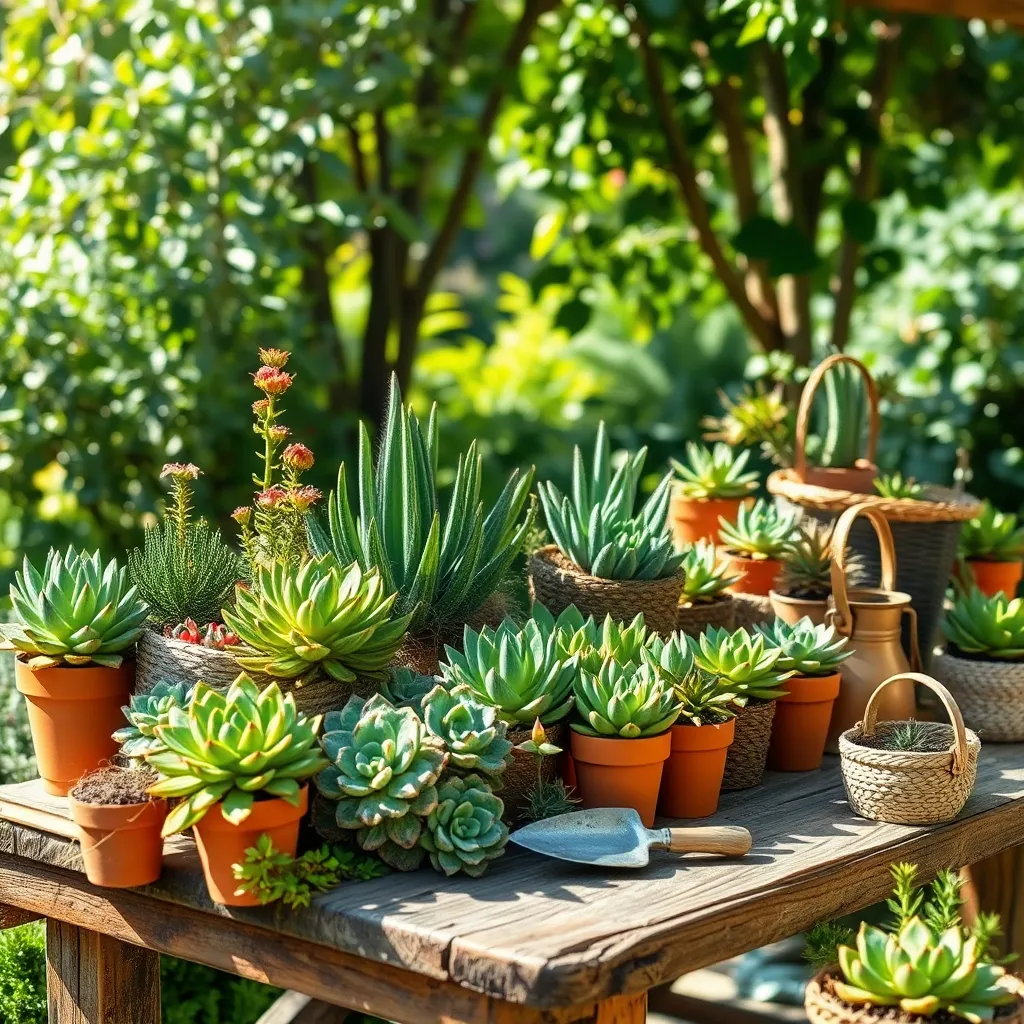
Choosing the right succulent varieties is essential for successful year-round care. Consider your local climate and indoor conditions when selecting succulents, as some thrive in certain environments better than others.
If you’re new to succulents, start with easy-to-grow varieties like Aloe Vera, Echeveria, and Jade Plant. These plants are forgiving and require less maintenance, making them perfect for beginners.
For advanced gardeners, explore unique varieties such as Lithops or String of Pearls, which can add a distinct visual appeal to your collection. These plants require more specific care, such as precise watering techniques and well-draining soil.
To ensure your succulents thrive, use a cactus or succulent-specific potting mix to provide the necessary drainage. It’s crucial to avoid overwatering, as succulents are prone to root rot; let the soil dry out completely between waterings.
Light is another critical factor, with most succulents preferring bright, indirect sunlight. If you’re growing them indoors, place them near a south or east-facing window to mimic their natural environment.
Position in Optimal Light Conditions
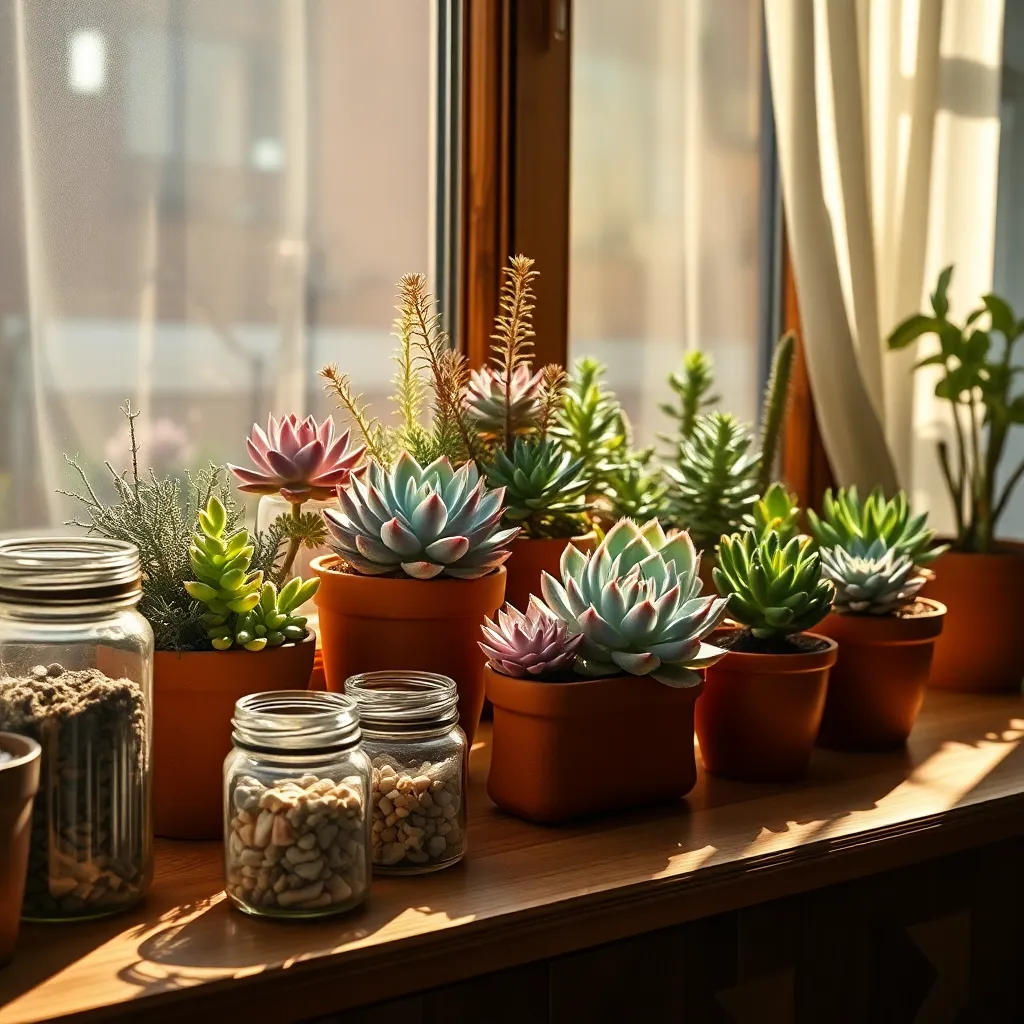
When growing succulents, understanding their light requirements is crucial for their health and growth. Most succulents thrive in bright, indirect sunlight, making a sunny windowsill an ideal spot for indoor plants.
For outdoor succulents, choosing the right location is key to preventing sunburn while ensuring they receive enough light. If you live in a hot climate, consider providing your succulents with some afternoon shade to protect them from intense midday sun.
The type of succulent you’re growing may influence its light needs. For example, species like Aloe and Haworthia can tolerate lower light conditions better than others, making them suitable for less sunny areas of your home.
Monitoring the light your succulents receive is essential to their care. If you notice your plants stretching or becoming leggy, it might be a sign they need more light; consider moving them to a brighter location or using a grow light.
Water Sparingly but Consistently
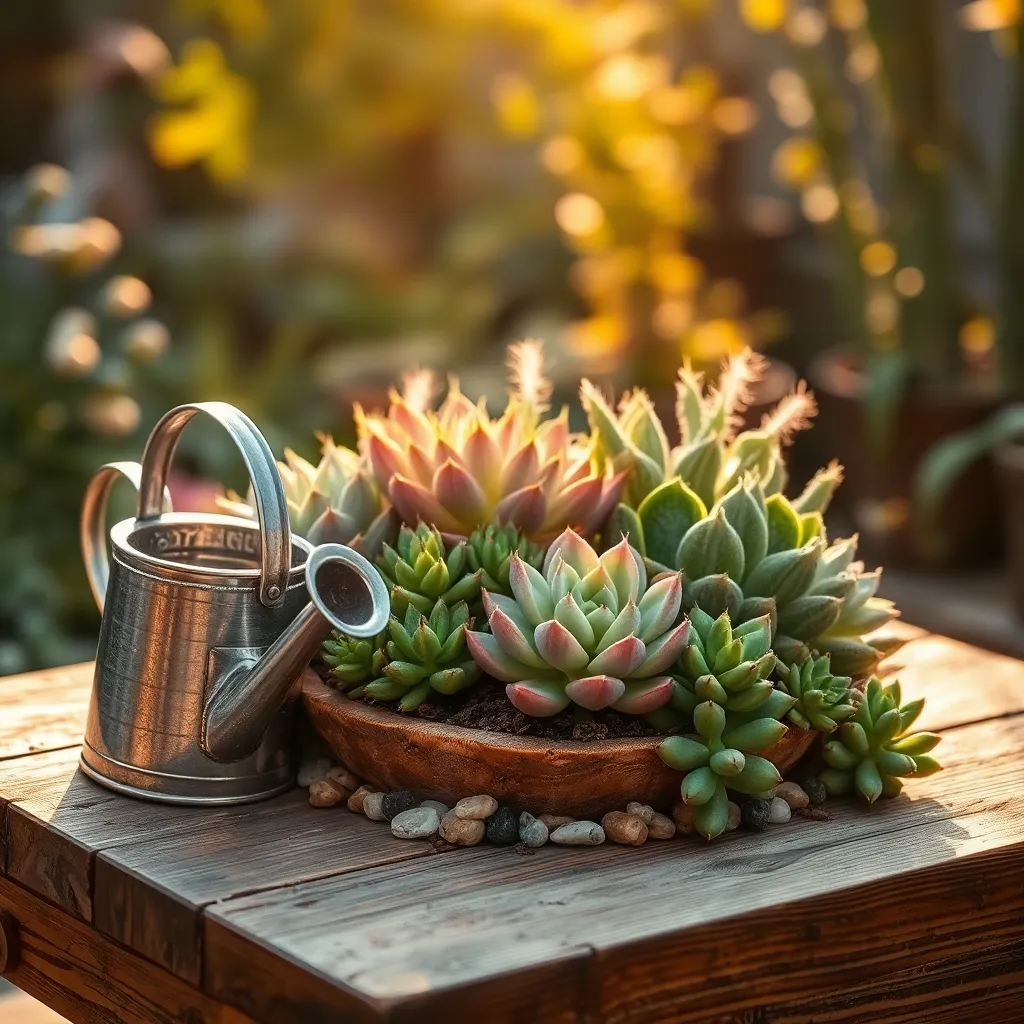
When it comes to succulents, *watering sparingly* is the key to their success. These plants store water in their leaves, so overwatering is a common mistake that can lead to root rot.
Instead of frequent watering, aim to water your succulents deeply but less often, allowing the soil to dry out completely between waterings. Depending on your climate and the season, this might mean watering every two to three weeks.
For beginners, a good rule of thumb is to touch the soil with your finger; if it feels dry at least an inch below the surface, it’s time to water. More advanced gardeners can invest in a moisture meter to ensure precise watering.
Using a pot with drainage holes is essential to prevent water from pooling at the bottom. Consider adding a layer of small stones or gravel at the base of the pot to enhance drainage.
- Use a *well-draining soil mix*, such as a cactus or succulent blend, to further aid in proper water management.
- Incorporate perlite or coarse sand into your soil mix to improve drainage and aeration.
During the dormant winter months, succulents require even less water. Reduce watering to once a month, making sure to adjust as needed based on the specific plant and its environment.
Fertilize During Growth Spurts
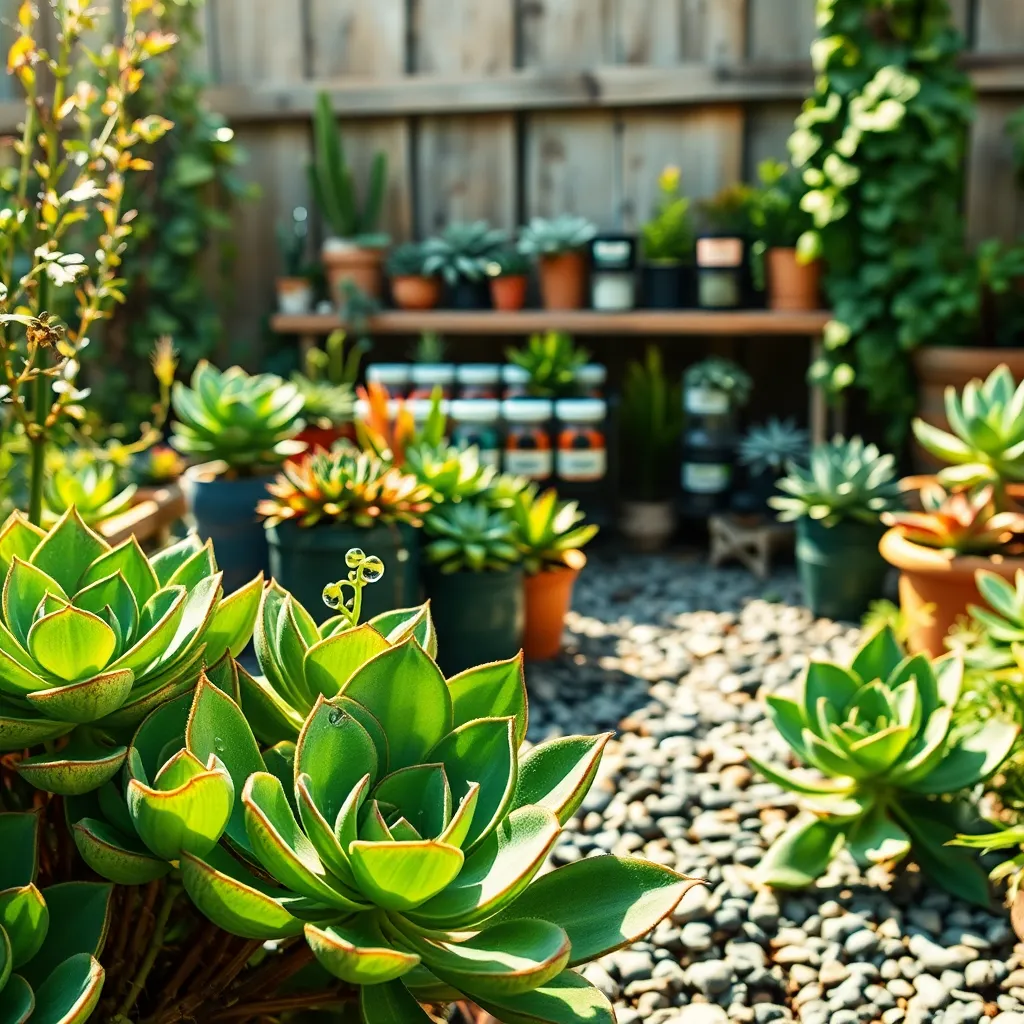
Fertilizing your succulents during growth spurts can greatly enhance their vitality and appearance. Typically, succulents experience these spurts in spring and summer when conditions are optimal for growth.
During these active periods, provide a balanced, water-soluble fertilizer diluted to half strength every four to six weeks. Choose a fertilizer with a balanced ratio like 10-10-10 or an even lower nitrogen formula to avoid excessive leaf growth, which can make succulents leggy.
Remember, it’s crucial not to over-fertilize, as this can lead to root burn and stressed plants. For a more advanced approach, consider using a slow-release fertilizer that gradually feeds your succulents over several months, minimizing the risk of over-fertilization.
If you’re unsure about the best time to fertilize, observe your succulents for signs of new growth, such as fresh leaves or stems. Always ensure the soil is slightly moist before applying fertilizer to help distribute nutrients evenly and avoid damaging the roots.
Manage Temperature and Humidity
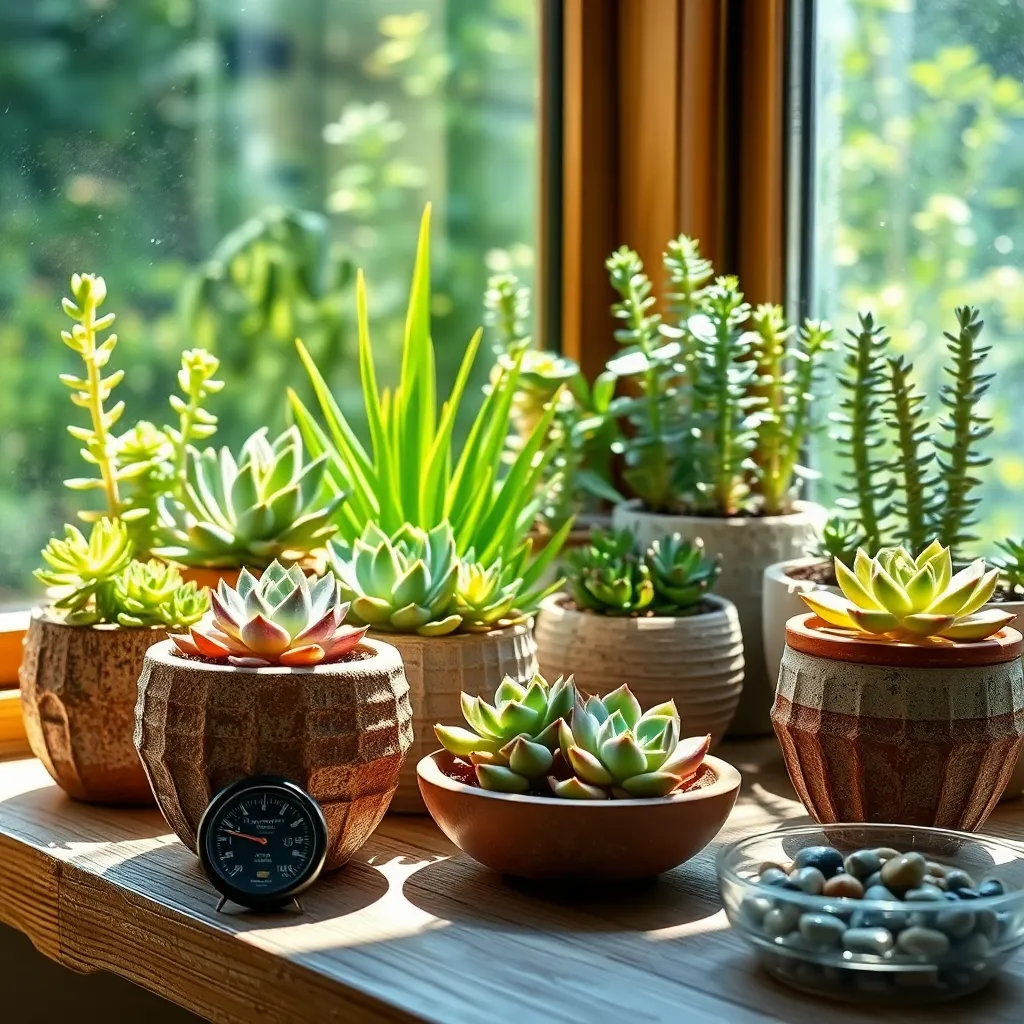
Maintaining the right temperature and humidity levels is crucial for the health of your succulents. Most succulents thrive in temperatures between 60°F and 80°F, making them perfect for indoor environments where such conditions are easily controlled.
In colder months, ensure your succulents are protected from temperatures dropping below 50°F, as this can cause damage. If you live in a region with harsh winters, consider placing your succulents indoors near a south-facing window to maximize warmth and sunlight.
Humidity can be tricky to manage, especially in more humid climates. Succulents prefer drier environments, so avoid placing them in bathrooms or kitchens where moisture levels are high.
For those in particularly humid areas, utilizing a dehumidifier can help create the ideal conditions for your succulents. Additionally, allowing air to circulate freely around your plants by spacing them out can prevent excess moisture buildup.
Advanced gardeners may consider using a hygrometer to monitor humidity levels more accurately. By keeping the humidity around 40-50%, you can ensure your succulents remain healthy year-round.
Conclusion: Growing Success with These Plants
In navigating the delightful journey of nurturing succulents, we’ve explored five essential relationship concepts: understanding your plant’s unique needs, establishing a consistent care routine, creating a harmonious environment, recognizing signs of distress, and nurturing growth with patience. These principles are not just about plant care but are a profound metaphor for cultivating thriving relationships in our lives.
As a first step, take a moment today to assess the ‘light’ in your relationships—are you giving and receiving the right amount of attention and care? Adjust as needed to ensure a nurturing balance.
Bookmark this article as your go-to guide for both plant and personal growth. It’s a resource you’ll want to revisit as you continue to cultivate bonds that flourish over time.
Looking forward, remember that successful relationships, much like well-cared-for succulents, require consistent attention and adaptability. By applying these insights, you’re on the path to fostering connections that are as resilient and vibrant as your favorite plants. Embrace the journey, and watch both your succulents and relationships blossom. 🌵💚 Save this article to stay inspired and informed!
